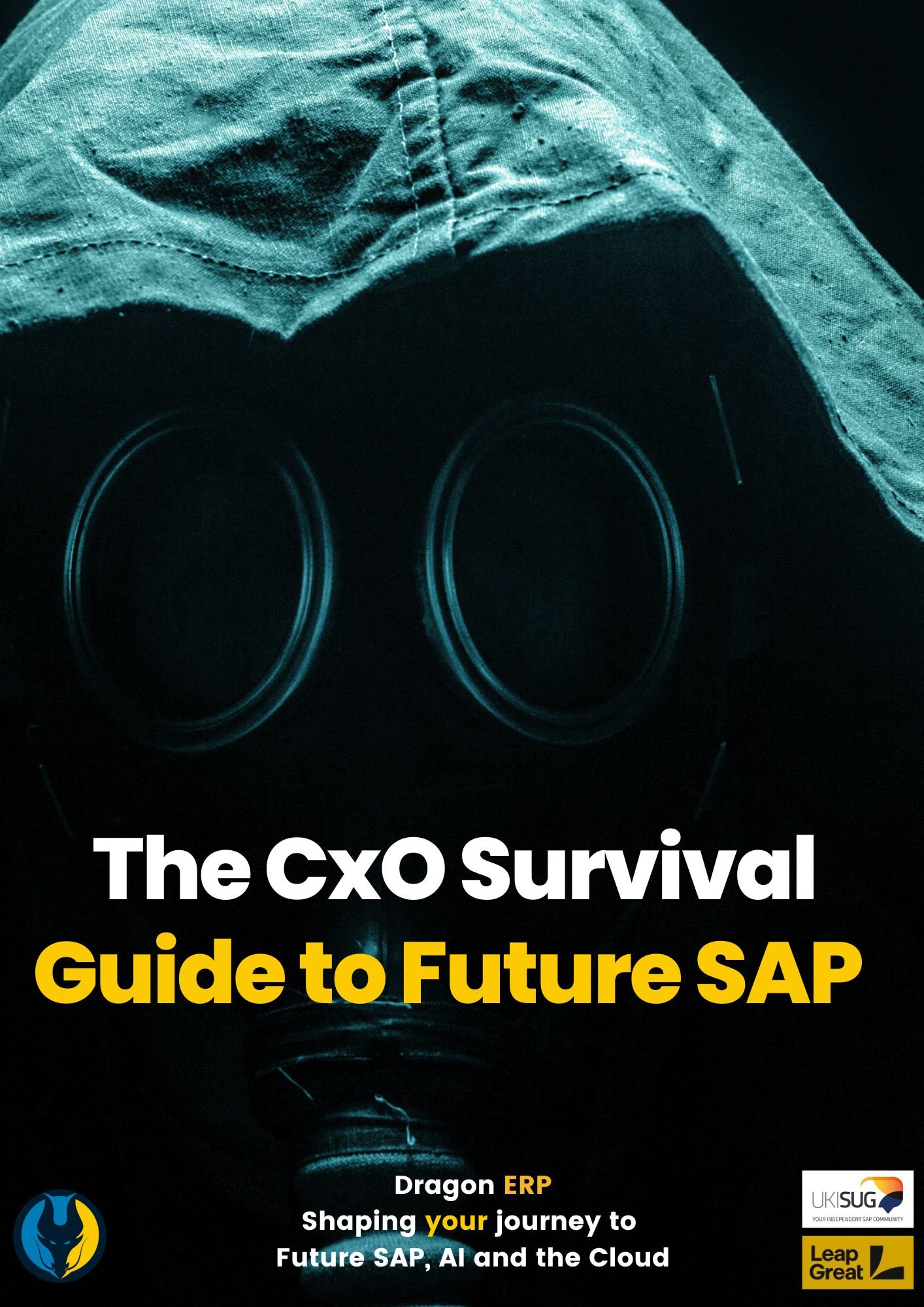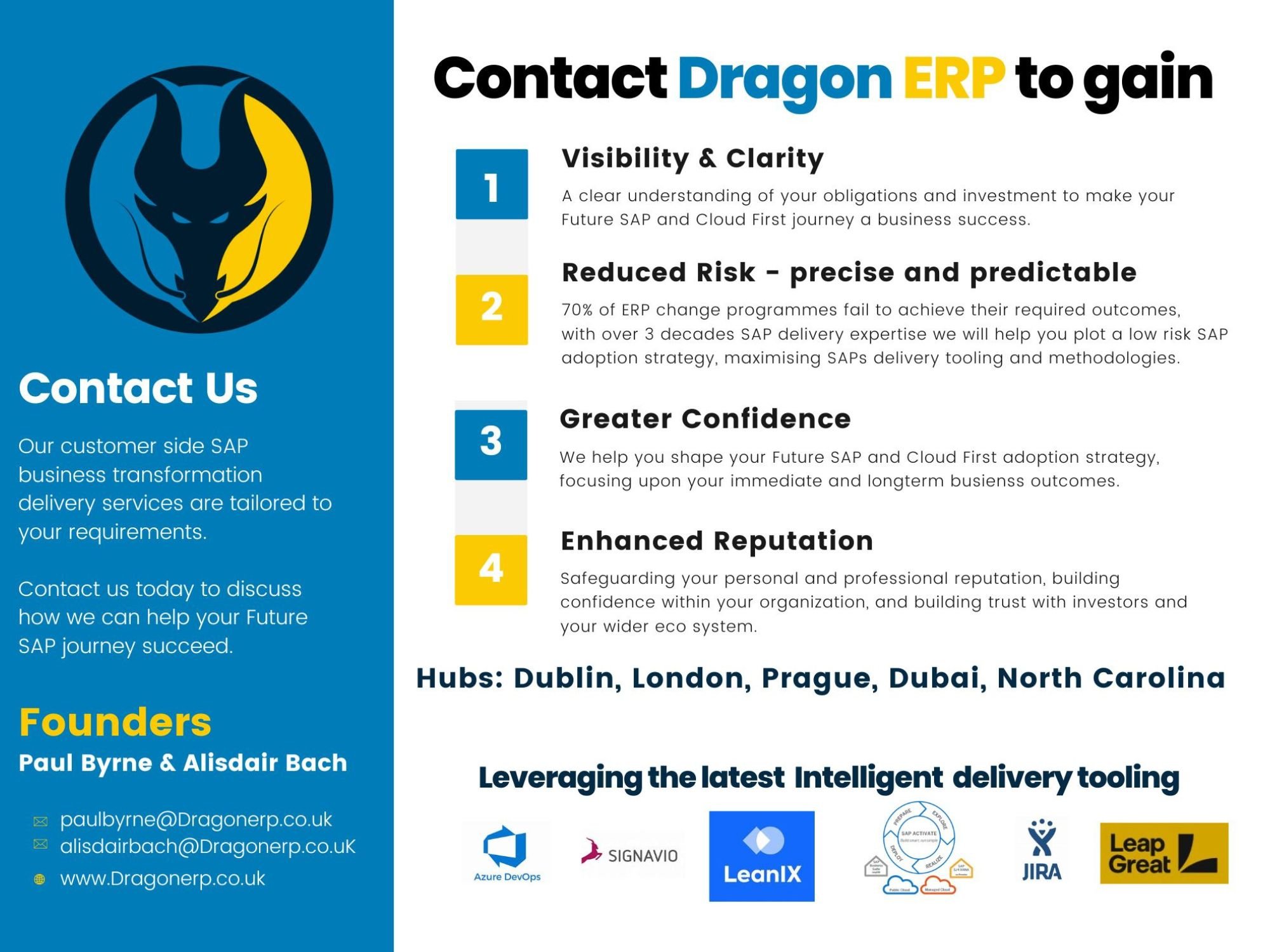Points to consider when moving to the SAP RISE licensing model.
“Helping complex organisations maximise their investment in SAP, its what we do”
In this Dragons Breath Blog, we address the issues existing SAP ECC and early adopter S/4HANA customers face when moving from the SAP Perpetual licensing model to SAP RISE licensing model and how can this be mitigated.
When customers move from the SAP Perpetual Licensing Model to the SAP RISE Licensing Model, they often encounter several challenges.
SAP RISE introduces a subscription-based model bundled with cloud hosting, managed services, and transformation tools.
Below are the common issues faced and their potential mitigation strategies:
1. Licensing Complexity and Cost Visibility
• Issue:
Customers may struggle to understand how the RISE subscription pricing compares to their existing perpetual licenses. Costs may appear higher, especially if perpetual licenses are fully depreciated or if usage does not align with RISE’s bundled offerings.
A further complexity arises from SAP now adopting a 3 tier licensing model, see below.
The constantly evolving RISE license model
• Mitigation:
Conduct a Total Cost of Ownership (TCO) analysis to compare current costs (including hardware, maintenance, and third-party services) against the RISE model.
Seek transparent pricing from SAP, breaking down bundled costs (e.g., hosting, support, cloud transformation tools).
Consider SAP RISE as a long-term investment rather than a short-term cost shift.
2. Unused or Redundant Capabilities in the Bundle
• Issue:
RISE bundles various services (e.g., SAP S/4HANA, Business Technology Platform, and transformation tools) that may include features customers do not need or already have through third-party providers.
• Mitigation:
Assess which components of the RISE package align with your business needs.
Negotiate with SAP to adjust the bundle or reduce costs for unused features.
Decommission redundant systems where possible to maximize value.
3. Vendor Lock-In Concerns
• Issue:
Customers may feel locked into SAP’s ecosystem due to the bundled nature of RISE and its cloud hosting components.
• Mitigation:
Negotiate flexible terms in the contract, such as exit clauses or clear data migration options.
Ensure your data remains portable and adheres to open standards to enable a potential switch in the future.
Leverage multi-cloud strategies for non-SAP workloads to maintain flexibility.
4. Performance and Service Level Agreements (SLAs)
• Issue:
Concerns about cloud performance, uptime, and SAP’s ability to meet business-critical SLAs may arise, particularly for customers used to on-premises control.
• Mitigation:
Review the SLAs provided by SAP for hosting, support, and managed services in detail.
Include penalties for SLA violations in the contract.
Monitor performance using SAP-provided tools and engage SAP early if issues arise.
5. Contractual and Ownership Considerations
• Issue:
Under the RISE model, customers no longer own the licenses or infrastructure, raising concerns about long-term dependency on SAP and contractual flexibility.
• Mitigation:
Negotiate contract terms that include future scalability options and cost predictability.
Ensure clear exit strategies are documented, including data ownership and migration support.
Explore hybrid deployment options such as the SAP PCE concierge service via a hyperscaler to retain some form of on-premises control.
6. Perceived Loss of IT Control
• Issue:
RISE shifts many operational responsibilities (e.g., hosting, upgrades) to SAP, which may concern IT teams used to managing their environments.
• Mitigation:
Define roles and responsibilities clearly during the migration process.
Utilize monitoring tools to maintain visibility into cloud operations.
Focus IT resources on value-added activities, such as innovation and business process improvements.
Conclusion
Transitioning to the SAP RISE licensing model requires careful planning and legal support.
A part of the Dragon ERP Phase Zero service we work with the award winning tech law firm TLT to help customers negotiate the RISE commercial model that works for them, ensuring obligations are understood and the long term exit strategy enshrined.
So if your struggling to shape your Future SAP strategy, then our CxO’s survival guid to Future SAP may be of interest. Register on our website for the new edition.
If you need help, then contact a Dragon……
Paul and Alisdair at a SAP Partner day





